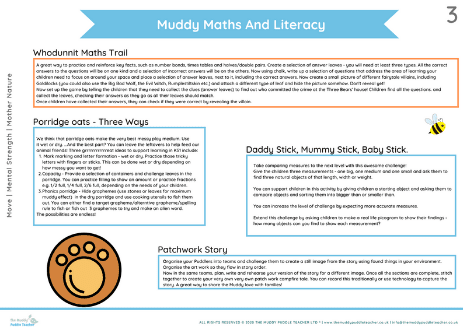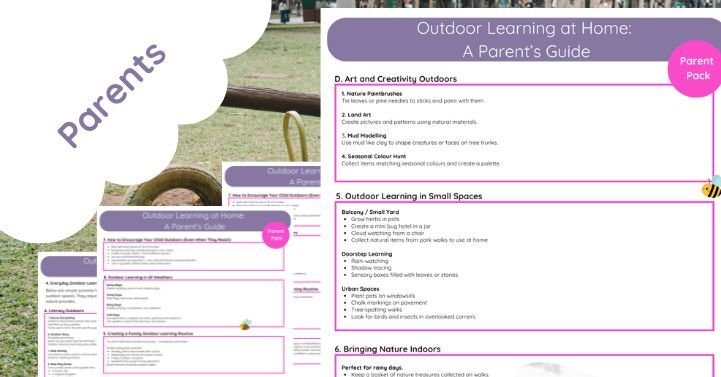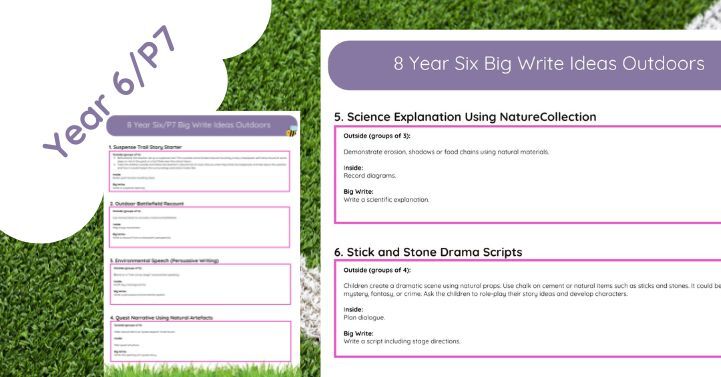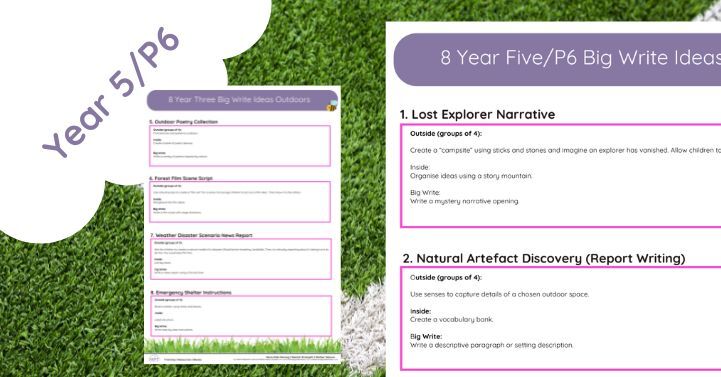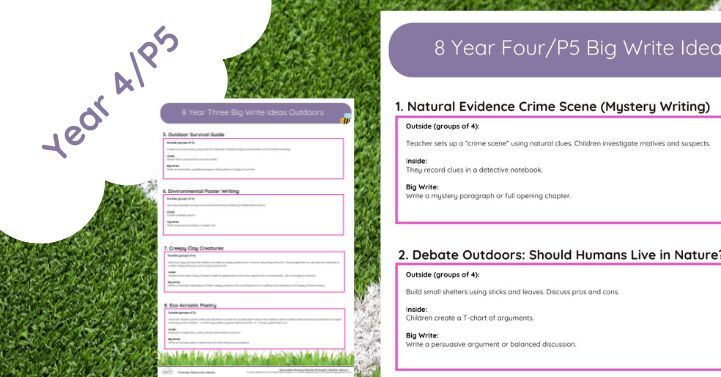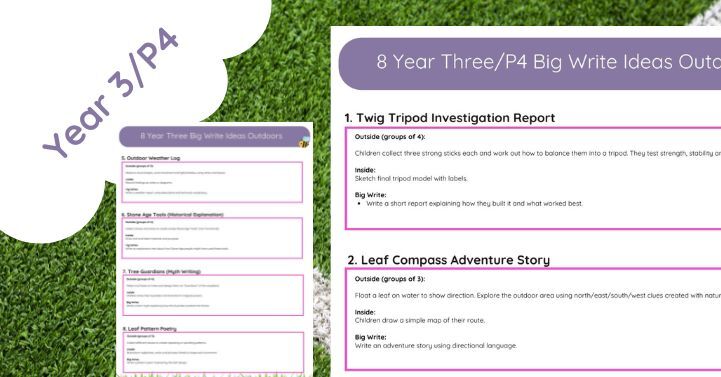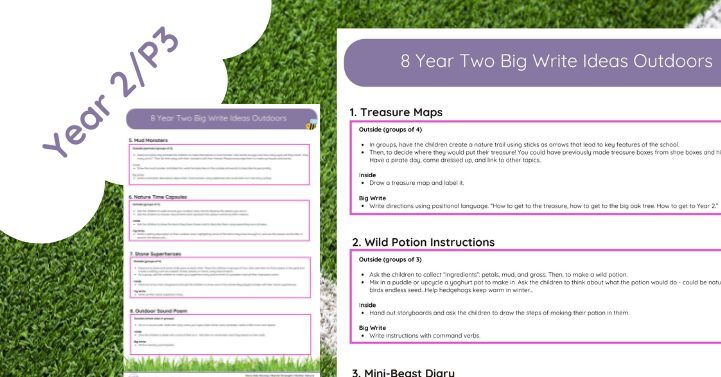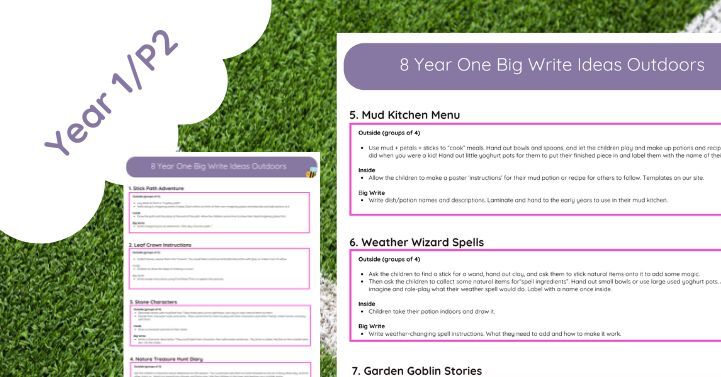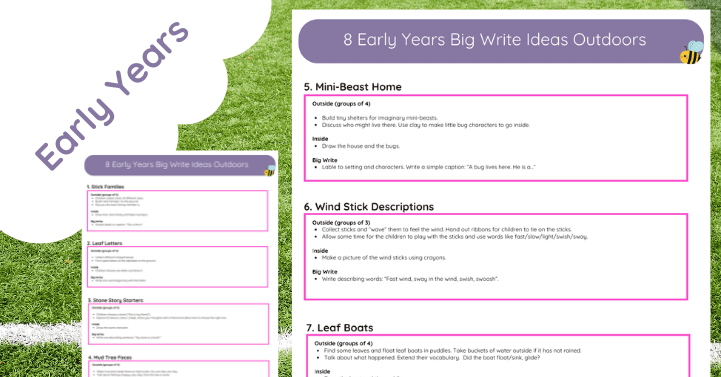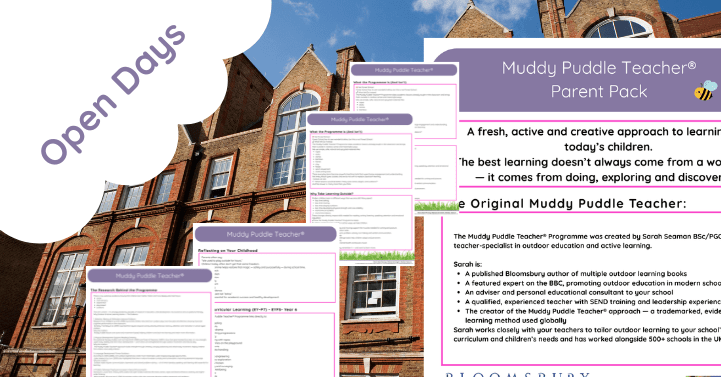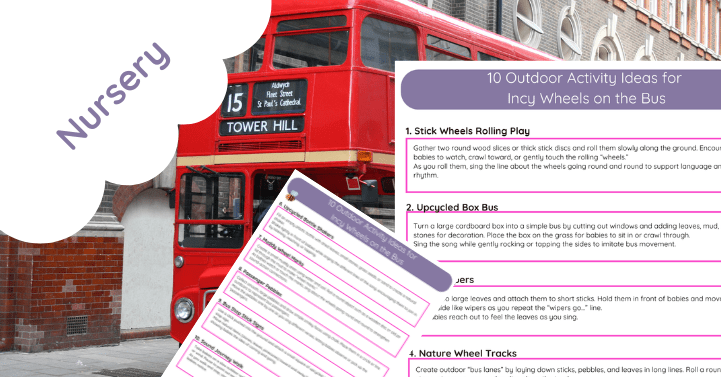Taking Goldilocks and the Three Bears Activities Outdoors with The Muddy Puddle Teacher Approach
Integrating classic fairy tales like “Goldilocks and the Three Bears” into outdoor learning activities can enhance children’s engagement, creativity, and understanding. The Muddy Puddle Teacher (MPT) approach emphasizes using nature as a primary learning resource, making education more dynamic and interactive. In this blog post, we’ll explore various outdoor activities inspired by “Goldilocks and the Three Bears” using the MPT approach, highlighting the benefits and providing practical ideas for implementation.
Benefits of Outdoor Learning
Enhanced Engagement and Motivation
Taking learning outside the classroom can captivate children’s interest and make the learning experience more dynamic. Nature’s variety keeps students motivated and excited.
- Active Learning: Hands-on activities in a natural setting encourage active participation and experiential learning. Read more about active learning.
Multi-Sensory Learning
Outdoor activities engage multiple senses, aiding memory retention and making learning more effective.
- Sensory Integration: Activities that incorporate sight, sound, touch, and movement help solidify concepts. Explore sensory learning.
Physical and Mental Health Benefits
Spending time outdoors is beneficial for both physical and mental health, promoting physical exercise and reducing stress.
- Physical Fitness: Outdoor activities promote physical exercise, reducing the risk of obesity and related health issues. Discover the benefits of physical activity.
- Mental Well-being: Nature reduces stress and anxiety, improving overall mental health. Learn about nature’s impact on mental health.
Practical Outdoor Activities Based on Goldilocks and the Three Bears
1. Story Walk
Create a story walk where children follow a trail that tells the story of Goldilocks and the Three Bears through illustrated pages or props.
- Activity Details: Place laminated story pages or props along a path. Children walk from page to page, reading and interacting with the story. Learn more about story walks.
2. Bear Hunt
Organize a bear hunt where children search for hidden teddy bears or bear footprints around the outdoor area.
- Materials Needed: Teddy bears, bear footprint cutouts.
- Instructions: Hide teddy bears and footprints. Provide clues or a map for children to follow. Explore bear hunt activities.
3. Size Comparison with Natural Objects
Use natural objects like leaves, stones, and sticks to teach size comparison concepts similar to the three bears’ chairs, beds, and bowls.
- Activity Details: Collect natural items of different sizes and categorize them as “small,” “medium,” and “large.” Learn about size comparison activities.
4. Outdoor Cooking
Simulate making porridge outdoors by using mud kitchens. Children can mix mud and water in different sized bowls.
- Materials Needed: Mud kitchen setup, bowls of various sizes.
- Instructions: Children pretend to make and compare “porridge” using different ingredients. Discover mud kitchen ideas.
5. Build a Bear House
Encourage children to build a small house or den for the bears using natural materials like sticks, leaves, and stones.
- Activity Details: Gather natural materials and construct a small house, discussing the story elements as they build. Learn about den building.
6. Role Play
Set up a role play area where children can act out the story of Goldilocks and the Three Bears using costumes and props.
- Materials Needed: Simple costumes, props like bowls, chairs, and beds.
- Instructions: Children take turns playing different roles, enhancing their understanding of the story and developing social skills. Explore role play ideas.
7. Nature Counting
Incorporate counting activities by collecting items like acorns, leaves, or pebbles and counting them into different sized containers.
- Materials Needed: Natural items, containers of different sizes.
- Instructions: Children count and sort items, reinforcing numeracy skills. Learn about nature counting activities.
8. Sensory Exploration
Create sensory bins with natural materials representing different parts of the story, such as oats for porridge, leaves for beds, and sticks for chairs.
- Materials Needed: Bins, natural materials.
- Instructions: Children explore the bins, discussing textures and relating them to the story. Discover sensory bin ideas.
9. Map Making
Have children draw maps of the bears’ house and the surrounding forest area, incorporating elements from the story.
- Materials Needed: Paper, markers, natural materials.
- Instructions: Children create maps, discussing spatial relationships and storytelling. Explore map making activities.
10. Story Retelling with Puppets
Use puppets to retell the story of Goldilocks and the Three Bears, encouraging children to participate and use expressive language.
- Materials Needed: Puppets representing the characters.
- Instructions: Children use puppets to act out the story, enhancing language and storytelling skills. Learn about puppet storytelling.
Internal Links for More Ideas
- EYFS Outdoor Learning Resources
- KS1 Outdoor Learning Resources
- KS2 Outdoor Learning Resources
- CPD Teacher Training
- Contact Us
Additional Resources
For further inspiration and detailed guides, explore the following links:
- Forest School Association
- Learning Through Landscapes
- Outdoor Classroom Day
- Children & Nature Network
- National Wildlife Federation
- Project Learning Tree
- The Nature Conservancy
- Green Schoolyards America
- Nature Play SA
- Earth Force
- Eco-Schools
- Global Outdoor Learning Initiative
- NatureBridge
- Natural Start Alliance
- Wildlife Trusts
Conclusion
Taking “Goldilocks and the Three Bears” activities outdoors using the Muddy Puddle Teacher approach provides a dynamic and enriching learning experience. By incorporating nature and physical activity into literacy lessons, children can enhance their understanding, creativity, and engagement. The practical ideas provided here are just a starting point for bringing fairy tales to life in an outdoor classroom. For more resources and ideas, visit The Muddy Puddle Teacher’s website and join our community dedicated to enhancing outdoor learning.


